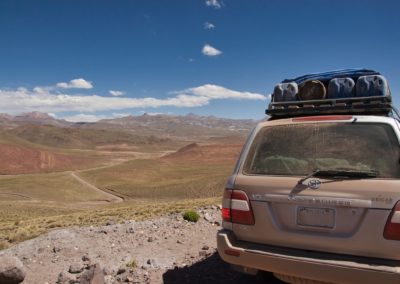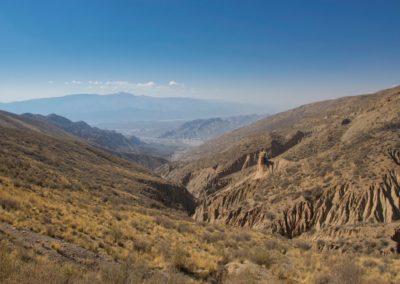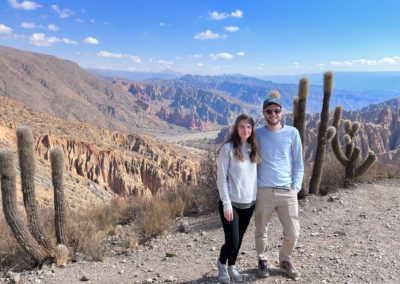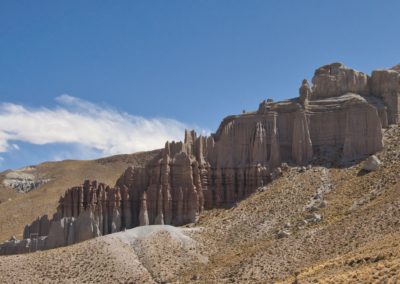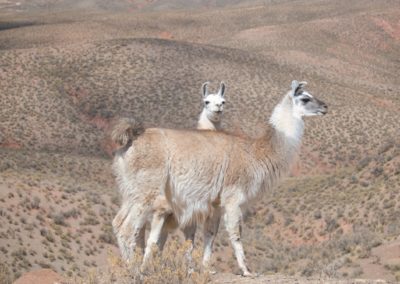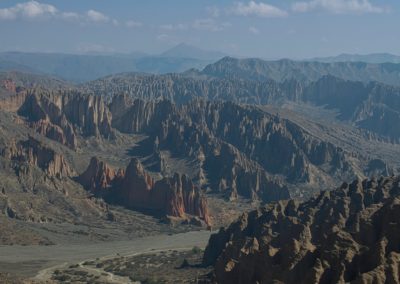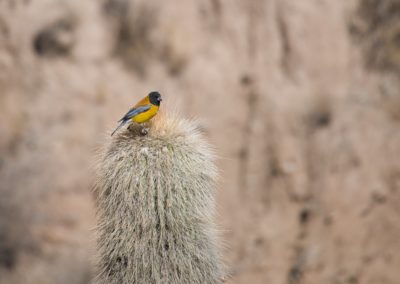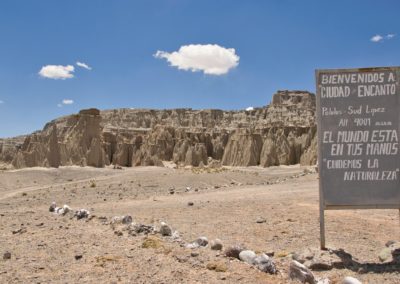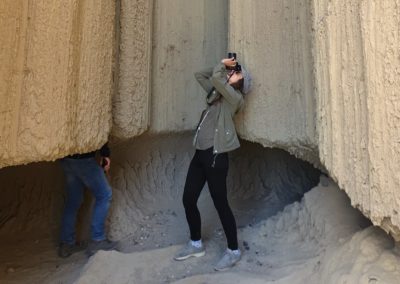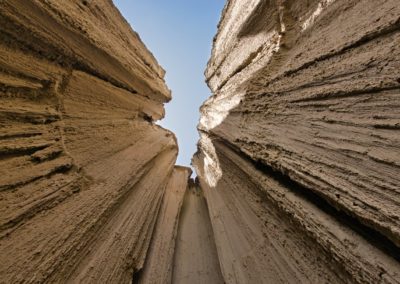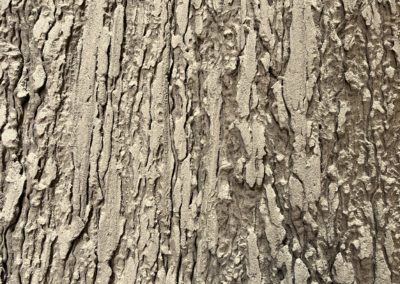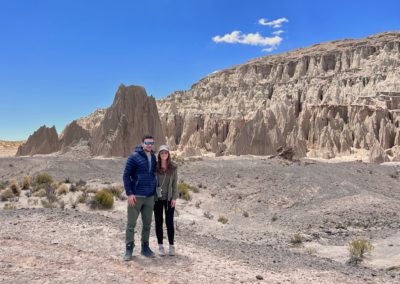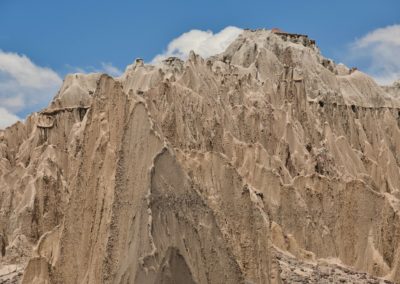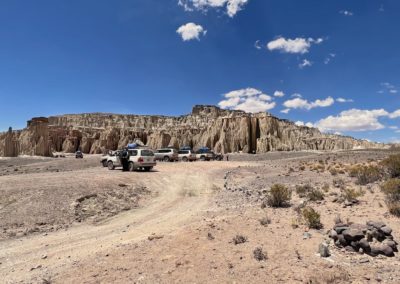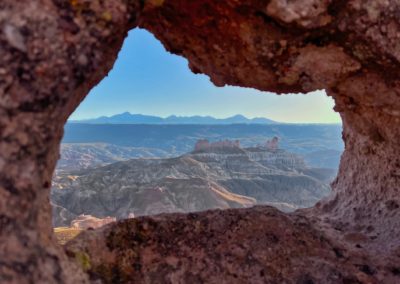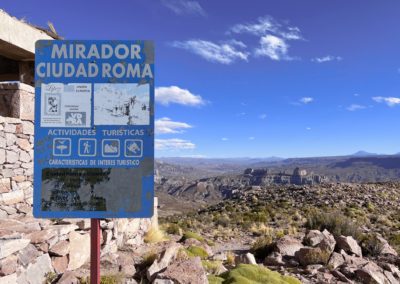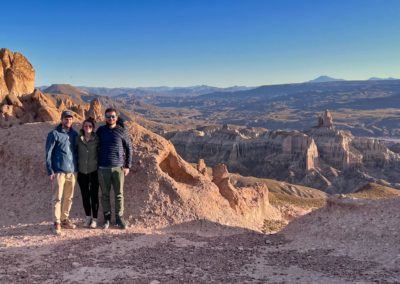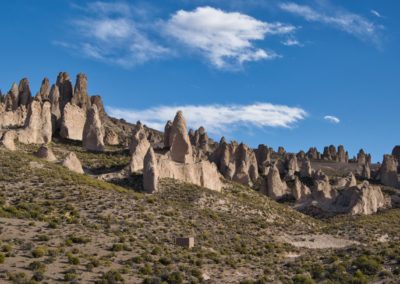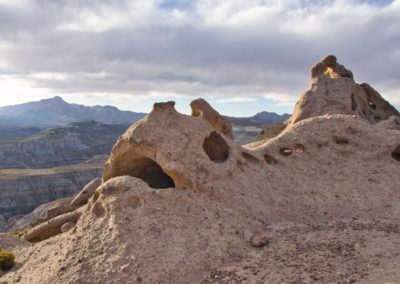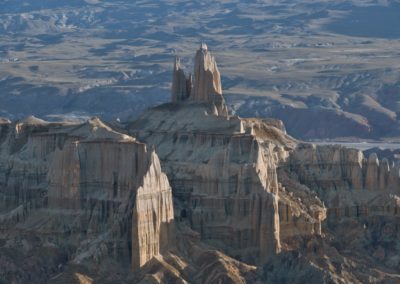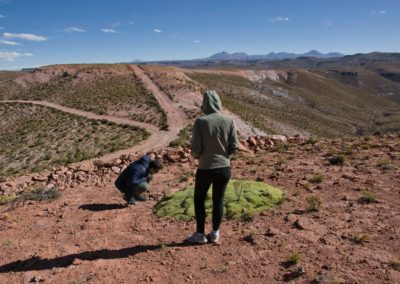tupiza Region
Bolivian Altiplano from Tupiza to Uyuni
The long-awaited moment has arrived! For the next six days we will cross the Bolivian high plateau from Tupiza to Uyuni, and of course still in good company of our friend Julien. In this isolated and sparsely populated region: no paved roads, no refueling points, rarely any electricity and very little comfort. But it is well worth the effort and our agency, La Torre Tours, meticulously planned the adventure for us.
Here we go !
Early morning on the first day, we meet Vicente, our guide and driver for the next six days. The car is fully loaded, and we set off through the narrow streets of Tupiza on our way out of town. The paved roads are soon replaced by more or less well-prepared dirt tracks.
The arid landscapes of the Bolivian high plateau unfold before us, and we catch our first glimpse of llamas and vicuñas. These two typical animals of the region are quite different in appearance and character. While the thick-furred, mainly domesticated llamas stand at the side of the road and watch us nonchalantly, the elegantly wild vicuñas quickly run away as we pass.
The atmosphere in the car, supported by Vicente’s playlist, is relaxed. Vicente is a real force to be reckoned with, and we know we are in very good and competent hands. Little by little, we learn more about our friendly guide. Trained as a mechanics and chauffeur-guide since almost 20 years, we enjoy all the anecdotes and stories he tells us, and the interesting information he passes on to us along the way.
At lunch, we meet Marco, our cook, who delights us right from the start with his delicious dishes. Also at the table are Annabelle and Alain, two friendly French tourists traveling in another La Torre Tours car. Over the next few days, we meet them several times, have a really good time and laugh a lot together.
Our highlights
La Torre Tours
Vicente & Marco
Annabelle & Alain
Drive across the high plateau
Llamas
Vicuñas
Ciudad del Encanto
West of Tupiza, we visit the Ciudad del Encanto. On our arrival, we quickly realize that we are almost alone here. Indeed, as fascinating and unique in its kind as it is, it is often overlooked by short tours.
The Ciudad del Encanto – City of Charm – is made up of imposing sandstone formations created over time by the erosion of wind and water. For a few Bolivianos, an elderly man, the site’s guardian, opens the “doors” to this incredibly special place. The astonishing rock needles and sandstone figures sometimes reach heights of over 10 meters. The Ciudad del Encanto area is astonishingly vast, and the small fraction of the site we are lucky enough to visit enchants us.
Our highlights
Ciudad del Encanto
Stroll through the site
Sandstones
Ciudad de Roma
We continue our way to our accommodation for the first night, a quite simple and typical hostal of the high plateau. We make a short stop here to drop off our belongings and immediately set off for Ciudad de Roma.
After about an hour’s drive, we reach the remote village of Guadalupe. Accompanying tourists to the Ciudad de Roma is one of the few sources of income for the locals. We pick up a local expert and continue our journey at a snail’s pace along a very difficult and bumpy road built by hand by the locals. In the middle of the desert, at an altitude of over 4’000 meters, we are surrounded by impressive rock formations formed here over thousands of years by water erosion. According to our guide, the name Ciudad de Roma was given by a Swiss man to whom the landscape reminded him of ancient Rome.
We stop briefly at the first viewpoint and enjoy a beautiful panoramic view. In the distance, we even spot a condor in flight. At our second stop, a short walk takes us to a new viewpoint. With Annabelle and Alain, we are the only tourists there. Our guide gives us lots of fascinating information about the rock formations, the isolated life in this region and the native plants. Among other things, we learn that the green, mossy, ground-growing “yareta” is mainly used as a medicinal plant. Once dead, its hard and dark remains are used to make fire.
Our highlights
Ciudad de Roma
Panoramic view
Rock formations
Coucher du soleil

